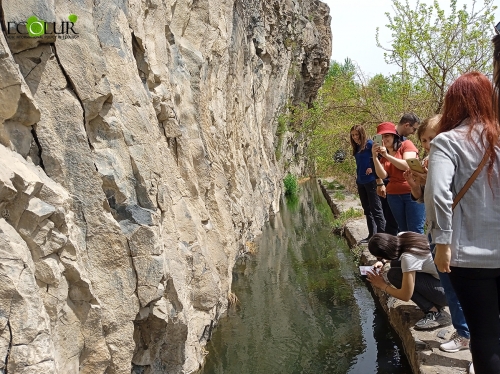

On April 23, EcoLur journalist Kristine Ter-Matevosyan, along with a group of citizens, took part in the Dalma and Umeshin canals campaign, which testifies to the thousand-year history of Yerevan.


In the Dalma Canal Tunnel


Mountaineer and cave explorer Artavazd Janoyan and cave expert, scientist Smbat Davtyan introduced the hikers the history of canals and local biodiversity. The information campaign was organized within the framework of "Green Justice" program jointly implemented by "Public Awareness and Monitoring Center" NGO and "Dalma-Sona" Foundation.

Dalma canal
n her conversation with EcoLur, Marie Chakryan, President of "Public Awareness and Monitoring Center" NGO, mentioned that the aim of the program is to popularize Dalma Gardens and related structures, as well as extremely important monuments of a later period in Yerevan. "Even if they are included in the list of monuments, people, even state bodies, do not know that we have such monuments. Our goal is to show their condition, to remind them of their potential and value, so that proper steps can be taken to present and preserve them," she said.


Dalma Canal was built thousands of years ago by the Urartians to irrigate Dalma orchards with the water of the Hrazdan River. Dalma Gardens was a unique green area ofthe capital - Yerevan, out of which almost nothing is left today. Today, instead of gardens, there are stone buildings and attractions. Dalma Canal still operates today thus delivering water to specially designated lands. There is no water in the canal at the moment, as cleaning works are being carried out to remove the garbage accumulated in the canal and remove the obstructions that block the flow of water.

The next stop was near Umeshin Canal built in the 7th century BC. It originates from Lake Yerevan and delivers irrigation water to Etchmiadzin Town.


Umeshin Canal

Today, in addition to Etchmiadzin residents, the water of the canal is used by the locals, who built water wheels in different parts of the canal in the 90s of the last century to pump irrigation water to their lands. The water wheel works without electricity, only due to the water flow.

Water wheel
"These areas can become tourist destinations," Marie Chakryan said, noting that they are going to submit proposals to Ministry of Education, Science, Culture, Sports and Yerevan Municipality.
April 23, 2022 at 20:40
